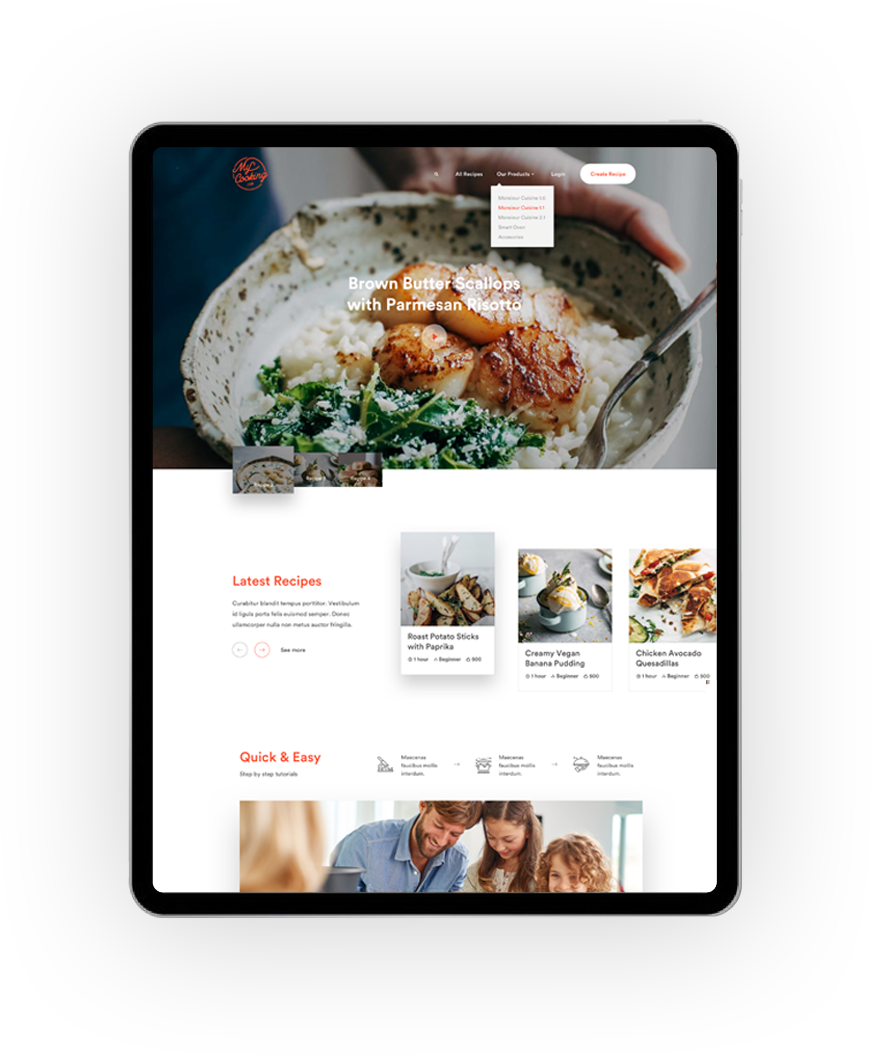User experience (UX) and user interface (UI) design are two terms that are often used interchangeably in the field of web design. However, they have distinct purposes and definitions. Aspiring designers need to understand these differences in order to build their knowledge and skills in web development and break into the UX/UI design field.
In this comprehensive guide, we will delve into the world of UX design, exploring its primary differences from UI design and what UX designers do for organizations worldwide. We will cover the definition of UX design, the role of UI design, and the key distinctions between the two. Additionally, we will discuss the skills required for UX and UI designers, the salary expectations for these roles, and the different educational pathways available to become a UX/UI designer.
What is UX Design?
User experience (UX) design refers to the user’s journey when interacting with a product or service. It encompasses various aspects of product development, including branding, usability, function, and design. UX design involves creating products or services that provide meaningful experiences for users.
To understand UX design, think of it as the entire process or journey a user experiences when interacting with a product or service. It starts from how the user is introduced to the product or service, whether through advertising, blogs, or other channels. It then encompasses the user’s interaction with the brand and how they feel after the interaction.
A UX designer‘s primary goal is to ensure that each user has a positive interaction with the product or service. Whether the interaction solves a problem, provides entertainment, or helps the user find critical information, the experience should leave the user feeling fulfilled.
What is UI Design?
User interface (UI) design, on the other hand, focuses on the actual interfaces with which users engage. UI designers work on the visual components and interactive elements of a product or service. This may include buttons, widgets, text, images, sliders, and other elements that users interact with.
UI designers ensure that every visual element, transition, and animation within a product or service contributes to a fluid and positive user experience. They are responsible for creating visually appealing and functional interfaces that align with the overall design objectives.
Key Differences Between UX and UI Design
While UX and UI designers often work closely together, there are several key differences between their roles and responsibilities. Understanding these differences is crucial for aspiring designers looking to specialize in either UX or UI design.
Look vs. Feel
One fundamental difference between UX and UI design is their focus. UI design primarily deals with the look of a product, including the visual components and interactive elements that contribute to a strong user experience. UX design, on the other hand, focuses on the overall feel of the product or service and the components that lead to a meaningful and relevant experience for users.
Design vs. Prototyping
UX and UI designers have different duties and goals. UX designers often create wireframes and testable prototypes that form the basis of a website or service’s user flow. They focus on the structure and functionality of the design. In contrast, UI designers finalize the designs and products, ensuring that they drive user engagement and satisfaction.
High-Level vs. Details
Another distinction between UX and UI designers is the level of detail they work with. UI designers focus on individual pages, buttons, and interactions, ensuring that they are polished and functional. They pay attention to the visual design elements and make sure they align with the overall design objectives. On the other hand, UX designers take a more high-level view of the product or service, ensuring a cohesive user flow across the entire site, service, or app.
UX and UI Design Together: How Does it Work?
Although UX and UI design have their own distinct roles, they are complementary and work together to create a positive user experience. UX and UI designers collaborate to ensure a cohesive and intuitive user journey.
The UX elements, such as client-facing messaging and feel, are built on top of the UI design, which focuses on the technical and aesthetic structure of the product or service. The efforts of UX and UI designers inform each other, benefiting the overall product and making a lasting impression on users.
What Does a UX Designer Do?
UX designers have a range of responsibilities that contribute to the creation of successful products and services. Their tasks include strategy development, testing, implementation, and analysis of products and their overall designs.
- Content Strategy: Content strategy focuses on the planning, creation, and execution of content, including text, images, and multimedia elements. While not always the sole responsibility of a UX designer, content-driven design is becoming increasingly important. UX designers may be involved in customer analysis, content auditing, competitor analysis, and other tasks related to content strategy.
- Testing and Prototyping: Testing and prototyping are essential parts of the UX design process. Most designs go through multiple iterations before they are finalized, and UX designers are responsible for creating wireframes and testable prototypes. They employ research methodologies such as A/B testing to ensure that the designs meet the needs and preferences of users.
- Coordination and Analysis: UX designers work closely with a broader design team to create products and services. They are involved in planning, developing strategies, executing projects, and analyzing the performance of their designs. They ensure that designs align with goals and metrics and make necessary updates based on analysis.
- Consumer Research: The best UX designs are driven by research. UX designers conduct various research methodologies, such as questionnaires, surveys, focus groups, and product testing, to gather insights about user problems and preferences. Research informs the design decisions and helps designers create products that address user needs effectively.
What Does a UI Designer Do?
UI designers focus on the specifics of a product or service’s interface. They are responsible for choosing fonts, creating visual elements, and ensuring that individual components or pages are visually appealing and aligned with the product’s objectives.
- Creating and Maintaining Brand Style: Establishing a defined visual brand style is crucial for businesses, and UI designers play a significant role in this process. They create products that are aesthetically consistent with the brand’s overall style. UI designers maintain brand style guides, implement accessible design standards, and ensure consistent branding across the product or service.
- Visual Design: UI designers build and optimize the individual visual elements of a digital entity, such as typography, color, button design, and other fields contributing to a strong interface. They focus on creating visually appealing elements that align with the overall design objectives.
- Interactive Design: UI designers also develop and implement the interactive elements of a website or service. This may include animations or other interactive elements that enhance the user experience. They create engaging visual elements that respond to user interactions, such as animations triggered by button clicks.
- Responsive Design: Modern products and services need to be accessible across various devices. UI designers ensure that the design is responsive and can be viewed and used on different devices, including laptops, tablets, and smartphones. They develop flexible layouts and design elements that adapt to different screen sizes and resolutions.
Why Is it Important to Know Both UX and UI?
Having a working knowledge of both UX and UI is crucial for professionals in the field. While they have distinct roles, UX and UI design are interrelated and contribute to the overall usability design process of a site or application.
Professionals who understand both UX and UI can contribute to a more cohesive and transparent design process, resulting in a better, more usable final product. This versatility also increases hiring potential in a variety of design-based roles.
The demand for UX designers is growing globally. According to the UX Design Institute, 70% of managers plan to increase the size of their design teams in 2021. Having a strong understanding of both UX and UI design can position individuals to capitalize on this growing demand and advance their careers.
How Can I Become a UX/UI Designer?
There are several educational pathways to become a UX/UI designer, including bootcamps, traditional degrees, and self-guided options.
- UX/UI Bootcamps: Bootcamps offer a quick way to start a career in UX/UI. They provide hands-on training in design, prototyping, and other relevant skills. Bootcamps are suitable for individuals looking to learn new skills and make a career change, even while working full-time. Completing a bootcamp can help build a professional portfolio and gain practical experience.
- Traditional Degrees: Traditional degrees in UX/UI design provide in-depth theoretical knowledge and a broader understanding of design principles. These programs typically require two to four years of full-time study. They allow learners to explore various topics related to design and provide a more comprehensive education.
- Self-Guided Options: Self-guided resources, such as online courses, educational apps, and videos, offer flexibility and autonomy in learning UX/UI design. These options are suitable for individuals who prefer a less structured approach and want to learn at their own pace.
Frequently Asked Questions:
Here are answers to some frequently asked questions about UX design:
What does UX design mean?
UX design stands for user experience design. It involves designing products or services that are easy and enjoyable to use. UX designers focus on creating meaningful experiences for users throughout their interaction with a brand, product, or service.
What does UI design mean?
UI stands for user interface, and UI design refers to the creation and design of the elements that users interact with when using a website or service. UI designers focus on the visual components and interactive elements that contribute to a positive user experience.
Is UX design the same as UI design?
While UX and UI design are related, they have distinct roles and responsibilities. UX design focuses on the overall user experience and ensuring that users find value in their interactions. UI design, on the other hand, focuses on the visual and interactive elements that make up the interface.
Is UX design a good career?
The demand for UX designers is growing, and the field offers promising career opportunities. According to the U.S. Bureau of Labor Statistics, the market for digital designers is expected to grow by 8 percent by 2029. The median salary for digital designers in 2020 was $77,200, higher than the median pay for the average worker.
Is UX/UI design hard to learn?
While UX/UI design involves prerequisite skill-building, it can be learned with the right preparation. Bootcamps, online courses, and self-guided resources provide opportunities to gain practical skills and knowledge in UX/UI design.
Can I get a UX/UI job with no experience?
There are various pathways to start a career in UX/UI design. Building a portfolio through freelance work or gaining experience within existing design teams can help showcase skills and stand out in the job market. Hands-on experience and examples of work are valuable assets when seeking a UX/UI job.
Should I focus on UI design or UX design?
Both UI and UX design are important aspects of the design process. The choice between the two depends on individual skill sets and interests. UI design is highly design-focused and suitable for individuals with artistic talents. UX design is ideal for problem-solving and implementing creative solutions.
In conclusion, understanding the differences between UX and UI design is crucial for aspiring designers. By acquiring the necessary skills and knowledge in both areas, professionals can contribute to creating well-designed and user-friendly products and services. Whether through bootcamps, traditional degrees, or self-guided learning, individuals can embark on a rewarding career in UX/UI design.



